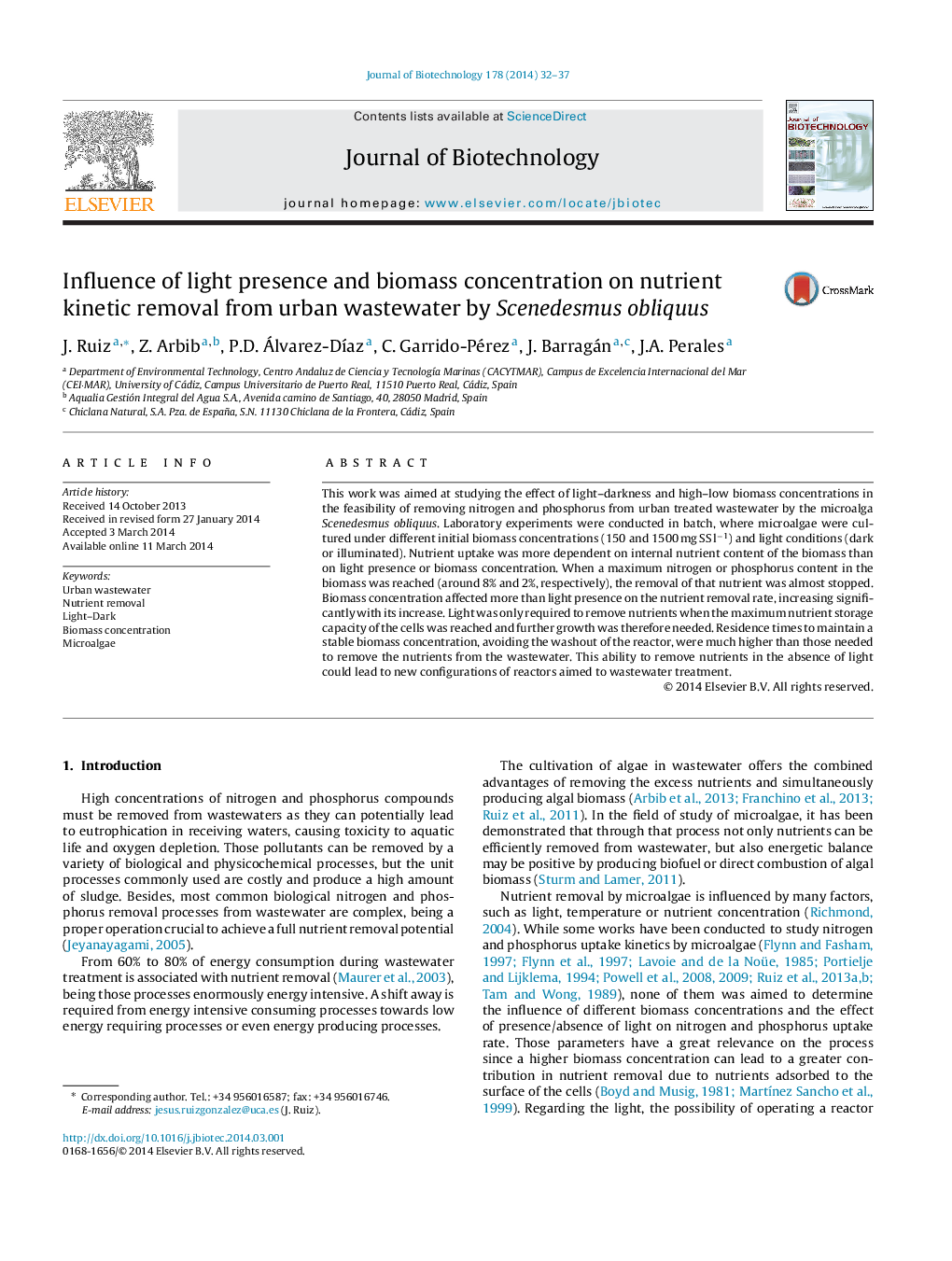| Article ID | Journal | Published Year | Pages | File Type |
|---|---|---|---|---|
| 23237 | Journal of Biotechnology | 2014 | 6 Pages |
•We cultured S. obliquus in different conditions in treated urban wastewater in batch.•We studied the effect of light, dark and biomass concentration in nutrient removal.•Nutrient uptake can take place in the absence of light.•Internal nutrient content was more relevant than light presence or biomass density.•These findings could lead to new configurations of reactors aimed to wastewater treatment.
This work was aimed at studying the effect of light–darkness and high–low biomass concentrations in the feasibility of removing nitrogen and phosphorus from urban treated wastewater by the microalga Scenedesmus obliquus. Laboratory experiments were conducted in batch, where microalgae were cultured under different initial biomass concentrations (150 and 1500 mg SS l−1) and light conditions (dark or illuminated). Nutrient uptake was more dependent on internal nutrient content of the biomass than on light presence or biomass concentration. When a maximum nitrogen or phosphorus content in the biomass was reached (around 8% and 2%, respectively), the removal of that nutrient was almost stopped. Biomass concentration affected more than light presence on the nutrient removal rate, increasing significantly with its increase. Light was only required to remove nutrients when the maximum nutrient storage capacity of the cells was reached and further growth was therefore needed. Residence times to maintain a stable biomass concentration, avoiding the washout of the reactor, were much higher than those needed to remove the nutrients from the wastewater. This ability to remove nutrients in the absence of light could lead to new configurations of reactors aimed to wastewater treatment.
